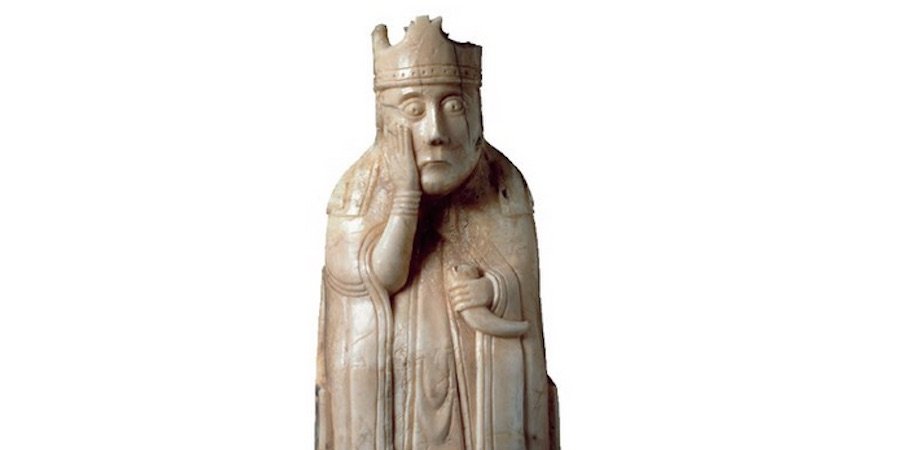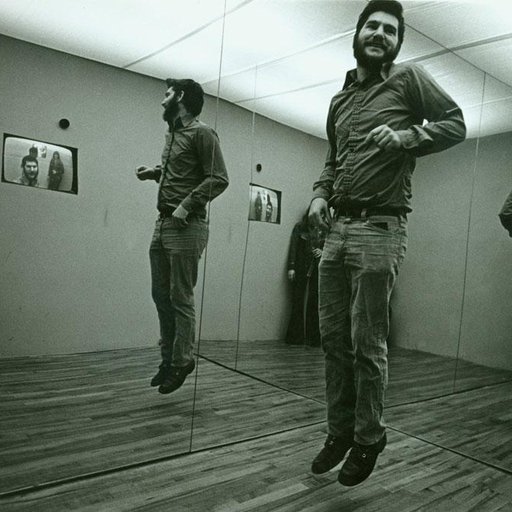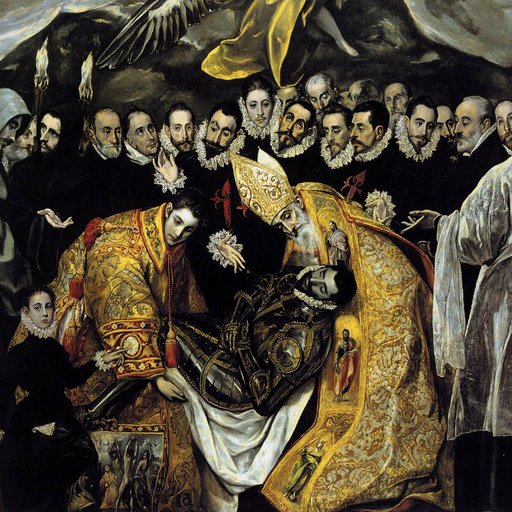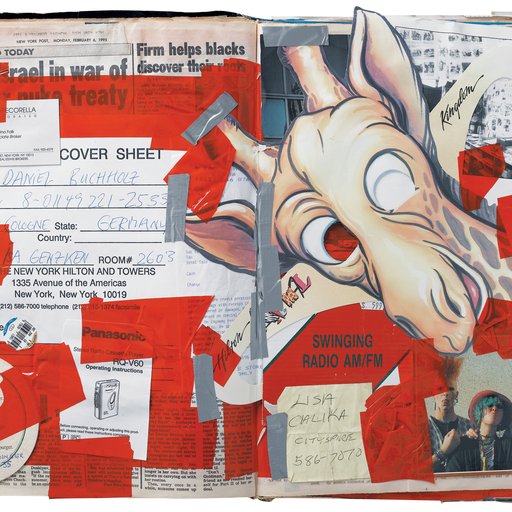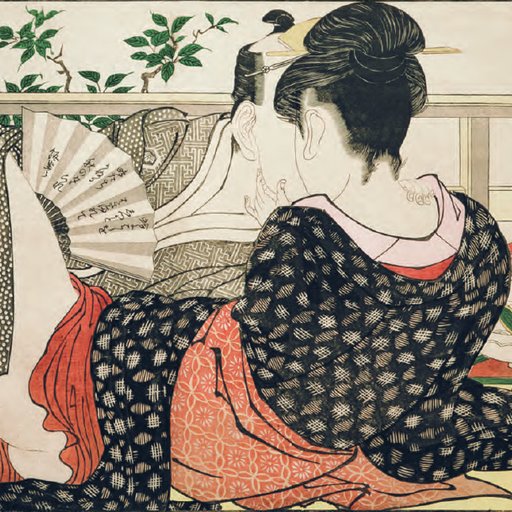If you’re having a bad day, you might want to avoid this list of six of the biggest bummers from art history, excerpted from Phaidon’s new edition of 30,000 Years of Art . From prehistoric soul-searching to Munch’s existential angst, these works are guaranteed to put a damper on your afternoon. Enjoy!
THINKER OF CERNAVODA
Artist Unknown
Romania, Hamangia Culture, c. 5000 BC
National Museum of Romanian History, Bucharest
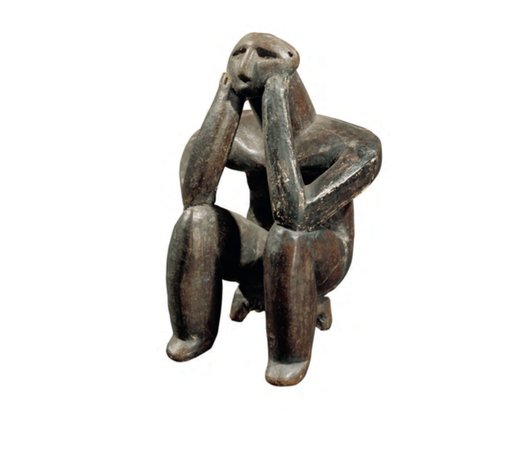
This terracotta figure, known as the Thinker ("Ganditorul"), was discovered in 1956 in settlement debris along with a female figurine, and although it is traditionally interpreted as male, it is interesting that its gender is ambiguous, as with many Neolithic figurines from southeast Europe. In general, it shares with this wider Neolithic world the small, angular, mask-like head placed atop a thick columnar neck, but here the head has a prism-like depth and oval outline.
The eyes are large for the face, although unlike the convex "coffee-bean" eyes typical of figurines from surrounding areas, the eyes on this piece are carved concavities. While the broad-hipped body in seated posture is shared with many other Neolithic figurines, the lack of engraved or painted detail on the body is striking.
The Hamangia culture of southeast Europe was a society of Neolithic agriculturalists who began to adopt the art of copper metallurgy from early in the fifth millennium BC. The youngest (c. 5000 BC) of several Hamangia settlement sites at Cernavoda, Romania, included a large necropolis containing more than 300 graves, and Cernavoda figurines were found both in the burials and in domestic contexts. Although in some respects they are typical of Balkan Neolithic sculptures of the sixth and fifth millennia BC, in others they are stylistically distinct.
CAPTURED NOBLEMAN
Artist Unknown
Mexico, Lirios Style, c. 725 AD
Museo de las Culturas de Oaxaca, Oaxaca

This portrait-like head came from a full-figure sculpture, the masterful modeling of the face hinting at the expressive power of the full artwork, now lost. Its fragmentary condition makes its artistic provenance, original form and meaning particularly difficult to ascertain, but it is, nonetheless, an exceptional example of the sensitive naturalism that characterizes the Lirios-style ceramic sculptures of central Veracruz and adjacent eastern Oaxaca. The male head, dated to the late Classic period (c. AD 600–900), is adorned with a nose ornament, elaborate chin strap and neck wrap composed of a triple strand of tubular beads with what appears to be a knotted cloth tie at the front. The thick cord that originally encircled his head and neck suggests that the figure was a portrayal of a captured nobleman.
Two attributes suggest that this piece may have come from Veracruz rather than Oaxaca. First, ritual decapitation of full-figure sculptures was a common ceremonial practice throughout central Veracruz and is seldom found in Oaxaca. Second, the figure’s pupils are indicated by spots of black asphalt paint, a technique often used by Veracruz artists to accentuate certain features of their sculptures and one very rare in contemporary Oaxaca. The sculpture may have been made in Veracruz and exported to Oaxaca as part of social, political or economic interaction between two cultures.
LEWIS CHESS PIECE
Artist Unknown
Norway, Romanesque Style, c. 1175
British Museum, London

This figure of a queen is one of 93 Scandinavian chess pieces found in a hoard near Uig on the Isle of Lewis, possibly hidden by a merchant en route to a wealthy Norse settlement in Ireland. The Outer Hebrides of Scotland were under the political control of Norway in this period (second half of the twelfth century), and the pieces have been connected with Trondheim, where similar work has been found.
Romanesque art has often been characterized by its quest for monumentality, even in the minor arts, and these figures possess a powerful feeling of weight and volume despite their diminutive size. The short, heavy pieces, full of compressed energy, are reduced to the simplest elements necessary for their identification. Their abstract regularity and cubic symmetry fuse the earlier Insular or Scandinavian tradition with the conservative elements of Romanesque art.
The carving is handled with great precision and shows a feeling for the ornamental beauty of line and curve, in which everything is subordinated to the overall design. The figures’ postures are relatively generic, but they nevertheless possess great wit and character. This queen has a somber expression highlighted by the concerned hand on her cheek, like the other seven examples of queens in the hoard. She differs, though, in being the only figure shown holding a drinking horn.
EXPULSION OF ADAM AND EVE
Masaccio
Italy, Early Renaissance, c. 1425
Santa Maria del Carmine, Florence
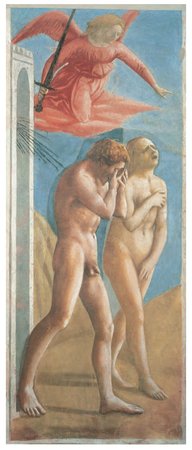
In 1425 two artists, Masaccio (Tommaso di Ser Giovanni di Mone) and Masolino, were commissioned by the Brancacci family of Florence to decorate their family burial chapel with scenes from the life of Saint Peter. Those images are on two tiers of the chapel and are flanked on the upper level by the Old Testament scenes of the Expulsion and the Temptation, painted between 1425 and 1428.
Masaccio (1401–1428) painted the scene shown here of the Fall of Man, as told in the Book of Genesis. Expelled from Paradise and flung into history by God, a distraught Adam and Eve stumble naked and shamed towards the east end of the chapel. Adam buries his downcast face in his hands, while Eve’s head is flung back, ensuring that her sorrow is entirely visible. Although her seemingly chaste pose is based upon the antique model of the Venus Pudica (Venus of Modesty), Eve’s gesture here is one of shame and misery. Masaccio has modeled her facial features as would a sculptor in a crude first attempt, gouging hollows for mouth and eyes in order to ensure that her distortive screams are almost palpable. The work is an unequalled image of pain and exclusion.
MELENCHOLIA I
Albrect Dürer
Germany, Northern Renaissance, 1514
Various Locations

Albrecht Dürer (1471–1528) was an outstanding painter, draughtsman and writer, but it was his printmaking that spread his fame far and wide. He was the first artist to establish his own printing business, on a par with his painter’s workshop, and he revolutionized the techniques of woodcut printing and engraving. In this masterwork, Dürer used a burin (a fine steel tool) to etch his design onto a copper plate, achieving a remarkable degree of expressivity and detail of line, combined with an unprecedented depth of total range through elaborate cross-hatching and tiny incisions that create a smooth transition of grey tones. The complexity and drama of Dürer’s subject matter endowed the humble medium with a new legitimacy.
This engraving has become the epitome of the Renaissance print, and its meaning has provoked much debate. The winged figure in a contemplative pose has been seen as a self-portrait of Dürer in the grip of the first of the three types of melancholy, melancholia imaginativa . The magic square on the wall alludes to a possible motive forthe artist’s melancholy – the death of his mother on 5 May 1514 – and various details refer to the four humors, which since antiquity had been held responsible for a person’s individual disposition. At the time of the Renaissance, melancholy was associated with genius and creativity, and the engraving may be interpreted as a highly complex allegory of the struggles of the artist.
THE SCREAM
Edvard Munch
Norway, Expressionism, 1893
National Gallery, Oslo

“The terror of life has pursued me ever since I first began to think ... I was very tired, leaning on a railing overlooking a fjord, alone, trembling with fear, and I experienced nature’s great scream.” This was how the Norwegian painter and printmaker Edvard Munch (1863–1944) described this, his most famous work, and it has remained an icon of man’s alienation and fear of nature ever since. It is also a powerful symbol of the artist’s own terror in confronting an increasingly alien modern world. By expressing his own feelings and personality, Munch became widely recognized as one of the first truly Expressionist artists, and this painting has influenced many twentieth-century art movements, from Expressionism to Surrealism.
Having left Norway to study in France, Munch became dissatisfied with the lyrical realities of French Impressionism, his first artistic love. He returned in 1890 to an increasingly desperate and tragic life in his own country, including familial sickness, insanity and early death. His attempts to achieve acceptance as an artist met with little success at first. Invited to exhibit in Berlin in 1892, he caused a furor with his strange paintings, which were seen as decadent and unacceptably amateur, partly because of his method of reducing all extraneous detail to a minimum, and partly because of his semi- autobiographical, mysterious subjects. He nevertheless inspired numerous admirers and followers in northern Europe and has been widely imitated.











